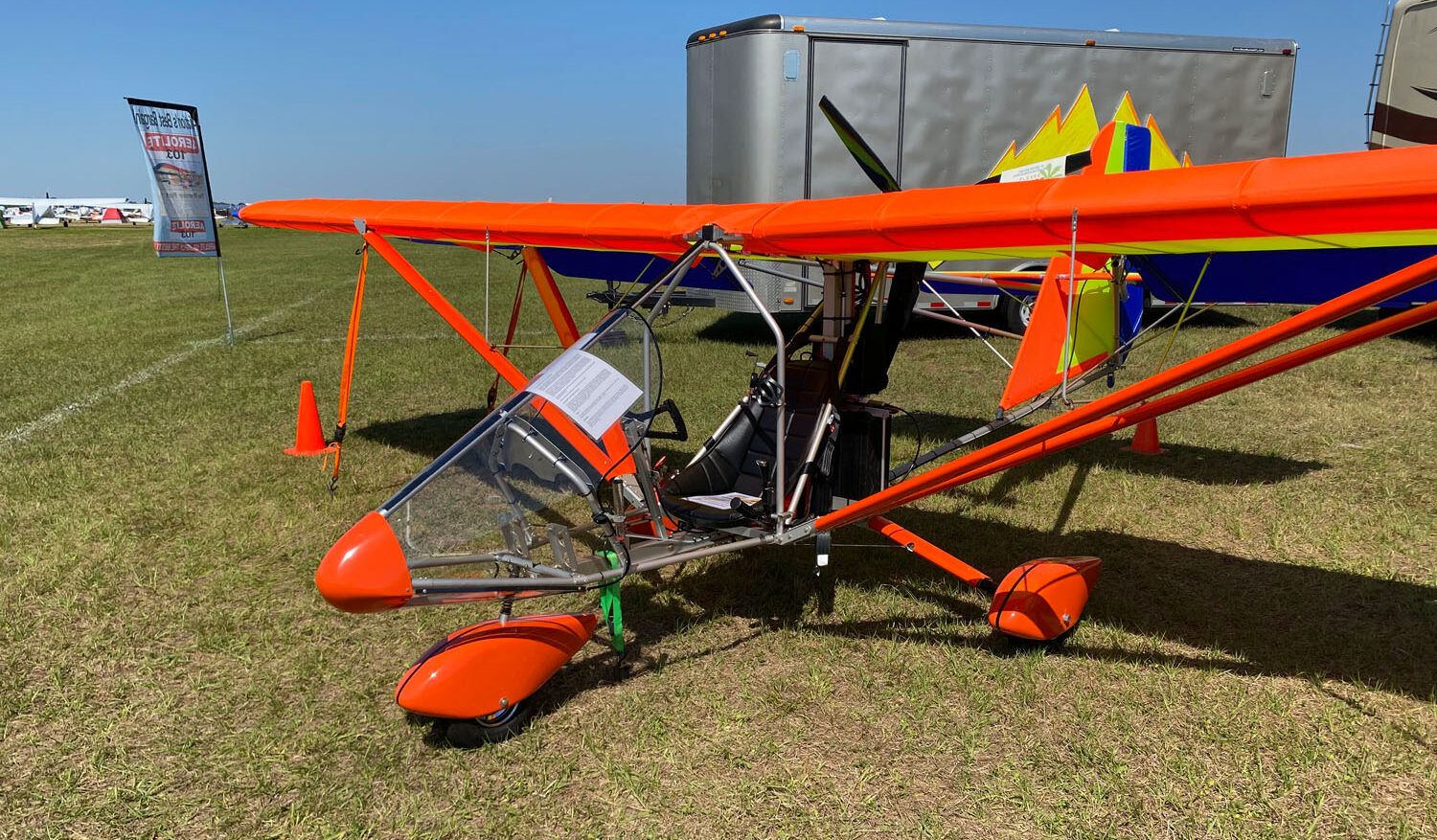
The Aerolite 103 has long been one of the leading truly legal (part 103 in the U.S.) ultralights on the scene. Pilots have been attracted to its exemplary handling, tricycle gear and control wheel configuration. The Aerolite 103 has been available fully assembled and as a wildly popular kit. Kit sales are currently backlogged for a period of 4 months. The kit is available with a variety of Hirth and MZ engines. Dennis Carley, the head honcho at Aerolite, tells folks that his 6’1″ frame and 220 pounds does nicely with the 28-hp Hirth F-33 engine. The airframe kit currently sells for $13,700 and the Hirth F-33 adds $5,700.
Aerolite has entered the green energy world with its Sun ‘n Fun debut of the all-electric Aerolite 103. Dennis Carley worked with an engineering firm to design and produce a brushless electric motor so small that it looks like a slightly enlarged prop hub. The motor runs off one to four lithium-ion battery packs, each weighing about 35 pounds. The specially designed motor is built in China, but the battery packs are made in the U.S.
The gas powered Aerolite 103 requires only 40 hours of construction from crate to taxi. This is not a pie in the sky claim from the manufacturer and scores of first time builders have proven it to be true. The new all-electric Aerolite 103 will require even less time, because the motor and battery assembly is literally plug and play. All of the components are pre-wired with connectors affixed.

After the engineers were through with the prototype, Dennis test flew the all-electric craft and he declares that it exceeded all of his expectations. Flying with three battery packs, Dennis observed that it performed similarly to the Hirth F-33 powered 103. Of course the aircraft is somewhat quieter, especially to those on the ground.
The big question is endurance. A lot depends on how much you push the aircraft and how much energy you conserve. Dennis states that a typical ultralight flight profile, with a full power take off, a reasonable climb and a 40-45 mph cruise will result in about an hour of flight time.
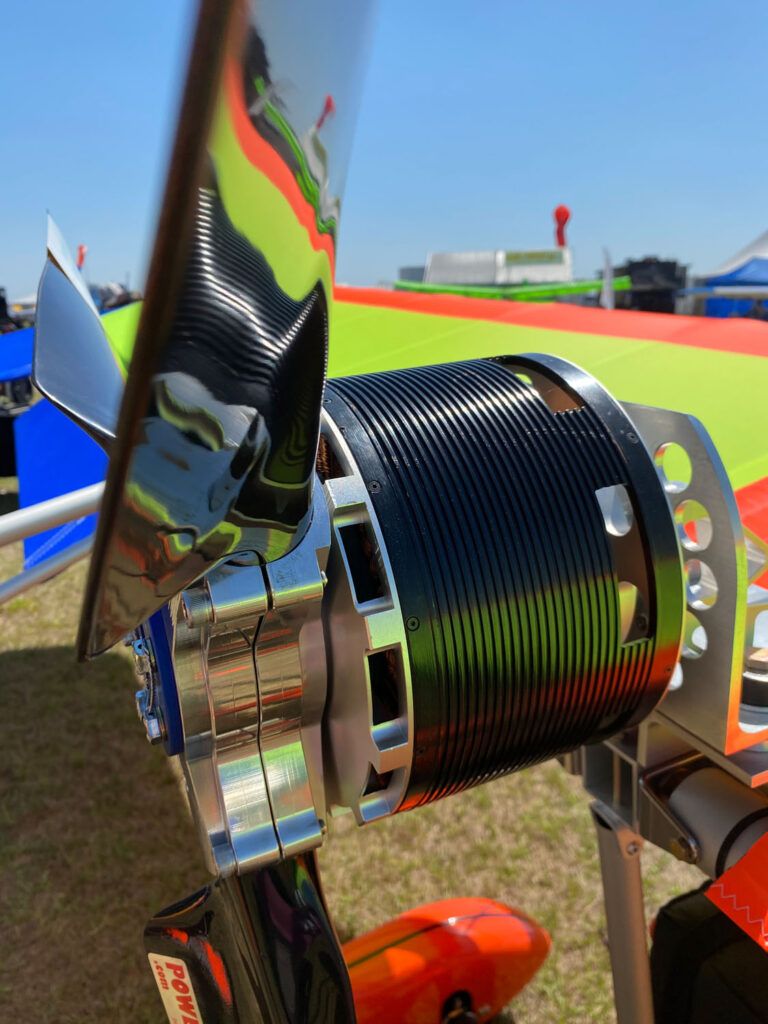
Another major question is whether the extra weight of the batteries will make the 103 ineligible for the exemptions granted to ultralight part 103 aircraft. Dennis sees this as uncharted territory. FAA regulations deal with gas powered aircraft. No regulations have been issued regarding electric-powered craft.
What does all this cost? Let’s just say that early adopters will have a premium to pay for being the first on their block to achieve powered flight without the assistance of dead dinosaurs. The airframe kit will presumably remain the same price, $13,700, and the electric motor package will set you back $4,650.
Correction 4/18/2021: We heard from Dennis Carley who provided this pricing information:
“The complete electric propulsion system, which includes the motor, motor mount, 2 batteries, 2 battery chargers, controller, throttle, cables, etc (everything you need to install and run the system) is $9,750. The complete system with 4 batteries and 4 chargers is $13,950.”
Dennis Carley is scheduled to fly the all-electric Aerolite 103 at Paradise City at 7:15 am on Wednesday, and hopefully other times thereafter.





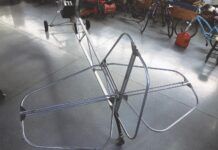
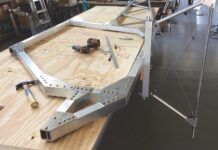

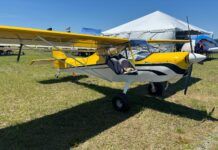
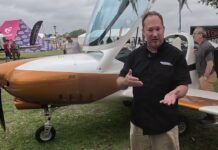


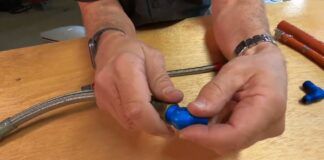
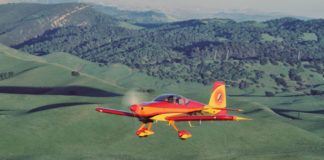

Looks like a good time
Just how much do the batteries weigh? Also, what is the weight of the motor package?
Great article on a fine airplane and company.
Hi there from Canada,
Two questions re: electric Aerolite 103
1) What’s a safe wind speed for safe cruising?
2) Can the 103 safely glide if the e-motor stops?
Thank you, (love your e-103)
My friends fly the gas-powered aerolite 103s, which have about (if not exactly) the same glide ratio. They glide better than the Quicksilvers, for sure. But they’re less forgiving in a stall. I’d guess you could realistically glide at 4:1 in an engine out, just to keep a healthy margin above stall speed. Just had an engine out the other day in my Hy-Tek Hurricane, and it was a non-event, thankfully. Land an ultralight into a brick wall if you need to, you’re only going 27 mph. Just don’t stall!
The Big Question not answered, is how many Battery Packs can it use and still make Part 103 without using a BRS?
How much Flight Time is that with that Part 103 configuration?
With the F33 (28hp) Electric Start it’s 235 lbs + 220 lbs +30 lbs of Gas = 485 lbs = 219.9923 kg / 10 kg = 21.99923 kw needed = 29.50145 hp is needed to Fly well.
Its MTOW of 600 lbs = 272.1554 kg / 10 kg = 27.21554 kw is needed = 36.49664 hp needed!
Also How much is (1) Battery Pack?
If (4) Battery packs might give you maybe (1 hr), what does (2) give you? What does (3) give you?
A Honda/Clone 460 Single upgraded about $1000, a 4 Stroke, can make 37hp@5000rpm and use an Ace Belt Drive $669.
For more cool electric aviation, check out the NASA solar plane Helios (going to need to use search terms ‘NASA solar plane Helios’ though, google gives preferential results to NASA’s Helios satellite so that will pop up if just the terms NASA Helios are used), where in 2001 they successfully built and passed benchmarks of a fully autonomous solar plane that could fly theoretically forever (panels produced enough electricity to store and use during night). Really cool, and it was built freaking 20 years ago, so this stuff has been viable forever.
@RichGillen
>> Also How much is (1) Battery Pack?
A battery and charger is $2100 ( Doing the math on https://www.uflyit.com/aerolite_103_prices.htm )
>> If (4) Battery packs might give you maybe (1 hr), what does (2) give you? What does (3) give you?
According to: https://www.uflyit.com/Aerolite%20ev-103.htm
> The short answer is ‘approximately 10 minutes per battery.’ 4 batteries will give you about 40 minutes of conservative flight time, 3 batteries will give you approximately 30 minutes, etc.
Do you sell just the electric motor? If so I was thinking about building a manned hybrid electric gas powered drone using 12 electric engines powered by a 10 kilowatt generator